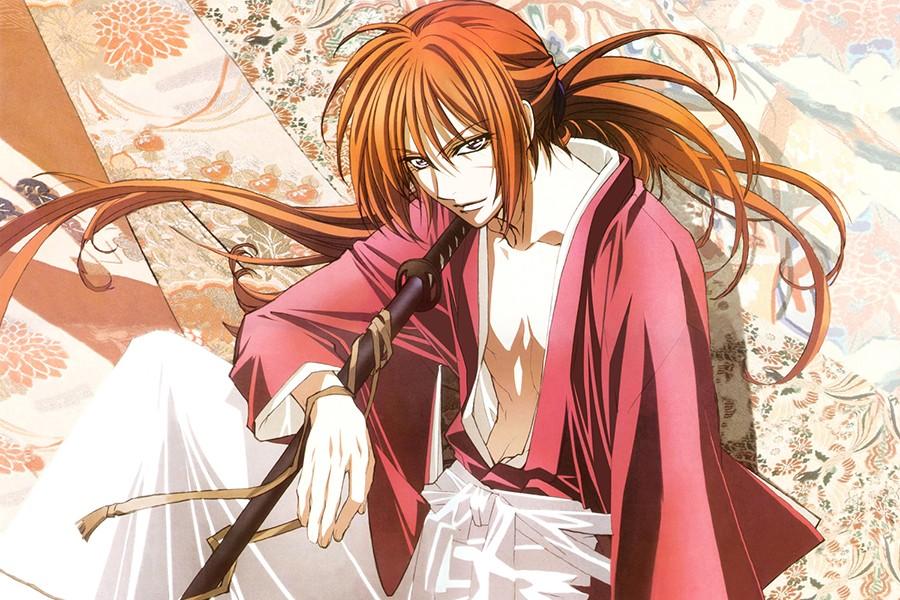Kenshin slits feudalism
Mar 16, 2016
An anime that mixes themes of politics and romance is rare these days. “Ruroni Kenshin” does exactly that, beautifully. Nothing beats the sound of two swords colliding with Japanese music in the background.
Swords clash in this anime series, with a new Japanese government on the cusp of falling. It is up to a soft-spoken swordsman with god-like talents and a dark- rooted past to prevent total collapse and chaos.
Twenty years after its 1996 release, this nostalgic anime is still proving inspirational to its viewers. “Ruroni Kenshin” is a 90s classic anime that will always hold a special place in the hearts of all anime fans.
The background music of the series pays homage to the days of Saturday morning cartoons, staying true to its core from the beginning. The show conveys a clear message of promoting political change and how the betterment of the world can be achieved by inspiring others.
Every character in the anime has a discrete personality, but conveys a strong sense of pride when it comes to their heritage and family honor.
Kenshin’s young apprentice Yoshiko Myyojin does not take kindly to being called little, coming from a family of samurai and often shows his family pride by chanting often. He longs to be respected and treated as mature for his young age, while mourning the death of his father.
Myojin looks up to Kenshin and trains hard every day in an effort to become a great swordsman like Kenshin. But like any other kid, he has a hard head, but a soft behind.
Himura Kenshin, formerly known as Battosai the Manslayer, chooses the nomad life after vowing to never kill another human after having served as the government’s assassin during the war.
Japan was in a civil war, changing from a feudal government to what it is today. Kenshin believes the Meiji Government could bring peace to Japan, killing thousands of men in support government. After the Meiji takeover, Kenshin acquires the reverse-blade sword, a fictional samurai sword with a dull blade.
On his journey as a wanderer, he comes across prideful characters who each have a strong, unique philosophy of life. With his non-lethal sword, Kenshin uses the way of the sword during these encounters and treats them as life lessons advancing his swordsmanship and morality. On his journey he finds a new purpose in life protecting the people of Japan who struggle to defend themselves against transgressors.
Part one of the series is Kenshin’s journey as wanderer in Tokyo. No one would expect this gentle, humble and oblivious person to be a former assassin. As the shows progresses this anime shows theres much more drama to come. The repetition of jokes gets predictable, but the characters’ reaction is what makes it hysterical.
The Meiji government kills off the army with Gatlin guns after using them as a scapegoat, for a crime the government committed themselves. Carrying on the hatred, Sanosuke becomes a fighter for hire to relive the regenerating anger inside him.
He becomes Kenshin’s right-hand man after being defeated by him. Kenshin changes his whole perspective of the Meiji government after their bout instilling in him that the government isn’t entirely corrupt and that there will always be some wrong-doing wherever you look.
The most memorable part of the series is the first episode, part two. It takes a dark spin, when Kenshin reminisces about the Revolutionary War in Kyoto where he earned his assassin name Battosai. In this bloody scene the Meiji Government army has just taken over Kyoto, leaving the Tokugawa shogunate making its final attack. The music in the background gave the scene context of what kind of mood it was going to be, a bloody massacre.
A group of the feudal army soldiers enters the Meiji’s headquarters and the blood bath begins. We learn more about Kenshin’s past and his time in Kyoto, which was mentioned throughout the first season.
“Ruroni Kenshin” is a cult show, meaning no matter how old the show is, it will continue to be an inspirational show and fans will re-watch it — teaching morals in each sword-clashing battle, and providing teachings about being a decent human being. The irony is everyone has a problem with the new government, but in the end they believe it will once and for all bring peace to Japan.


